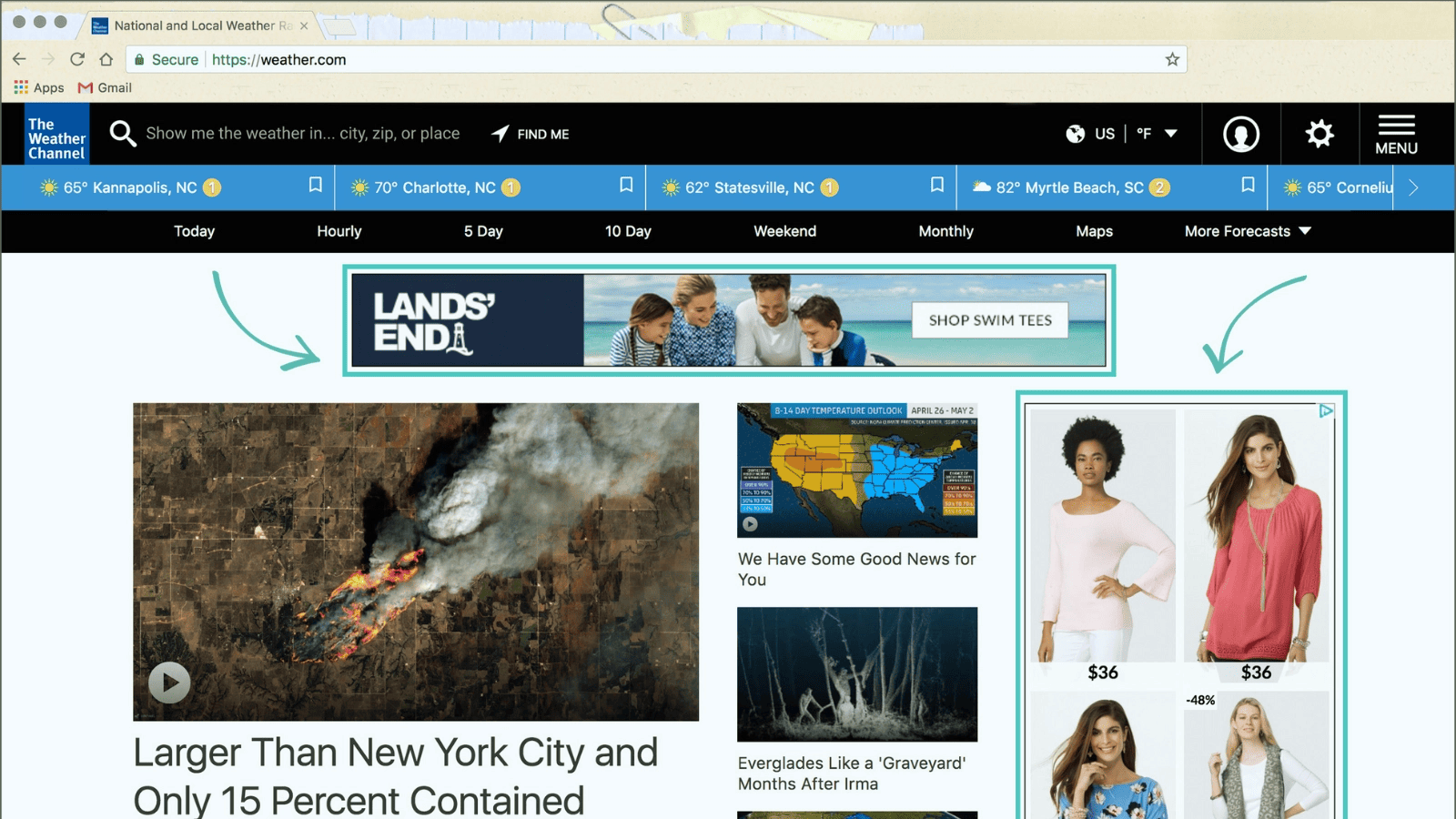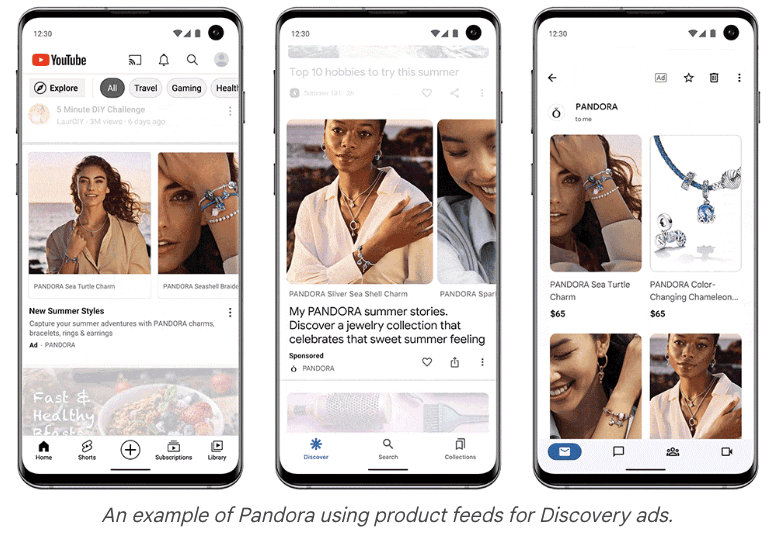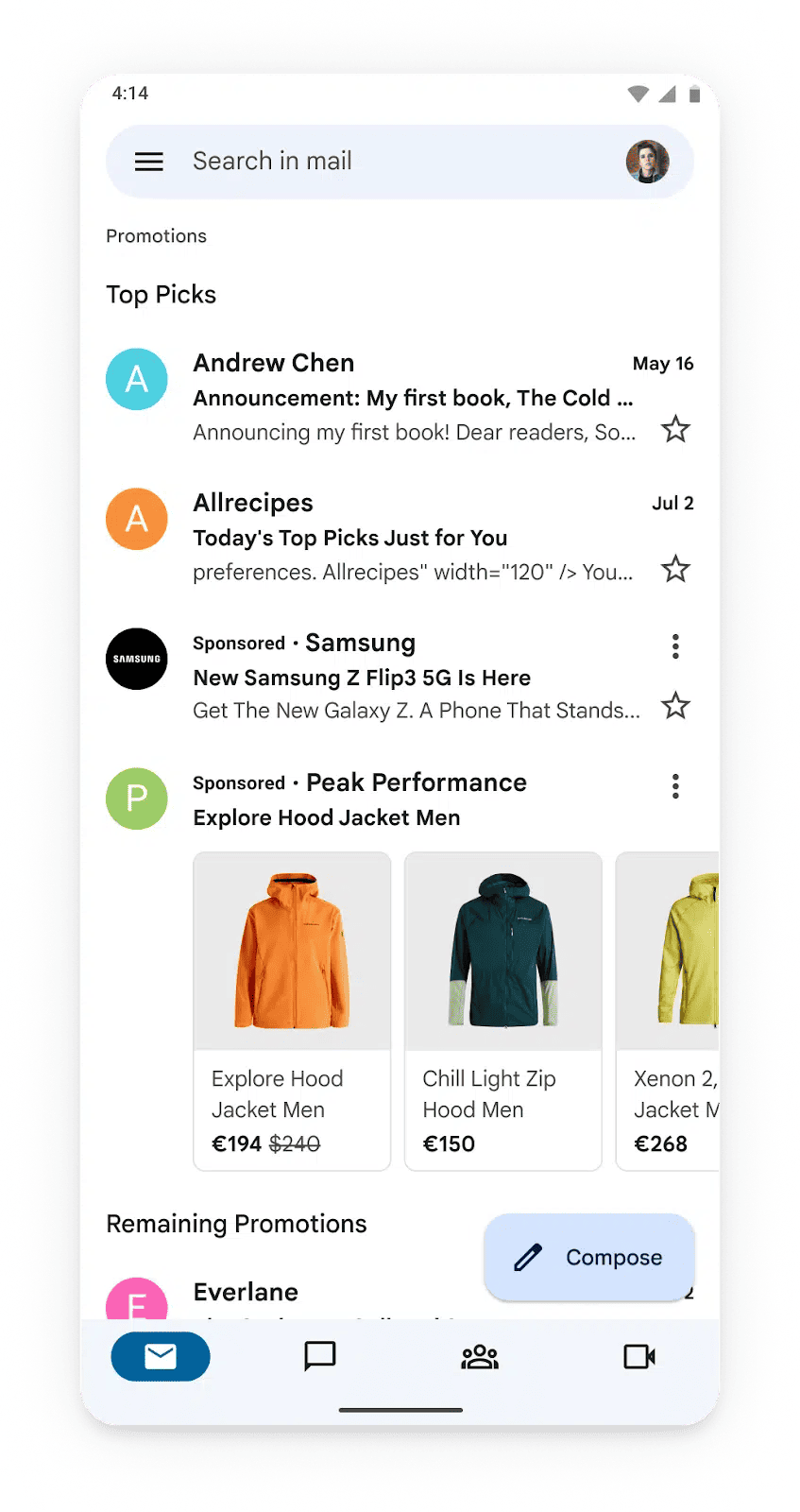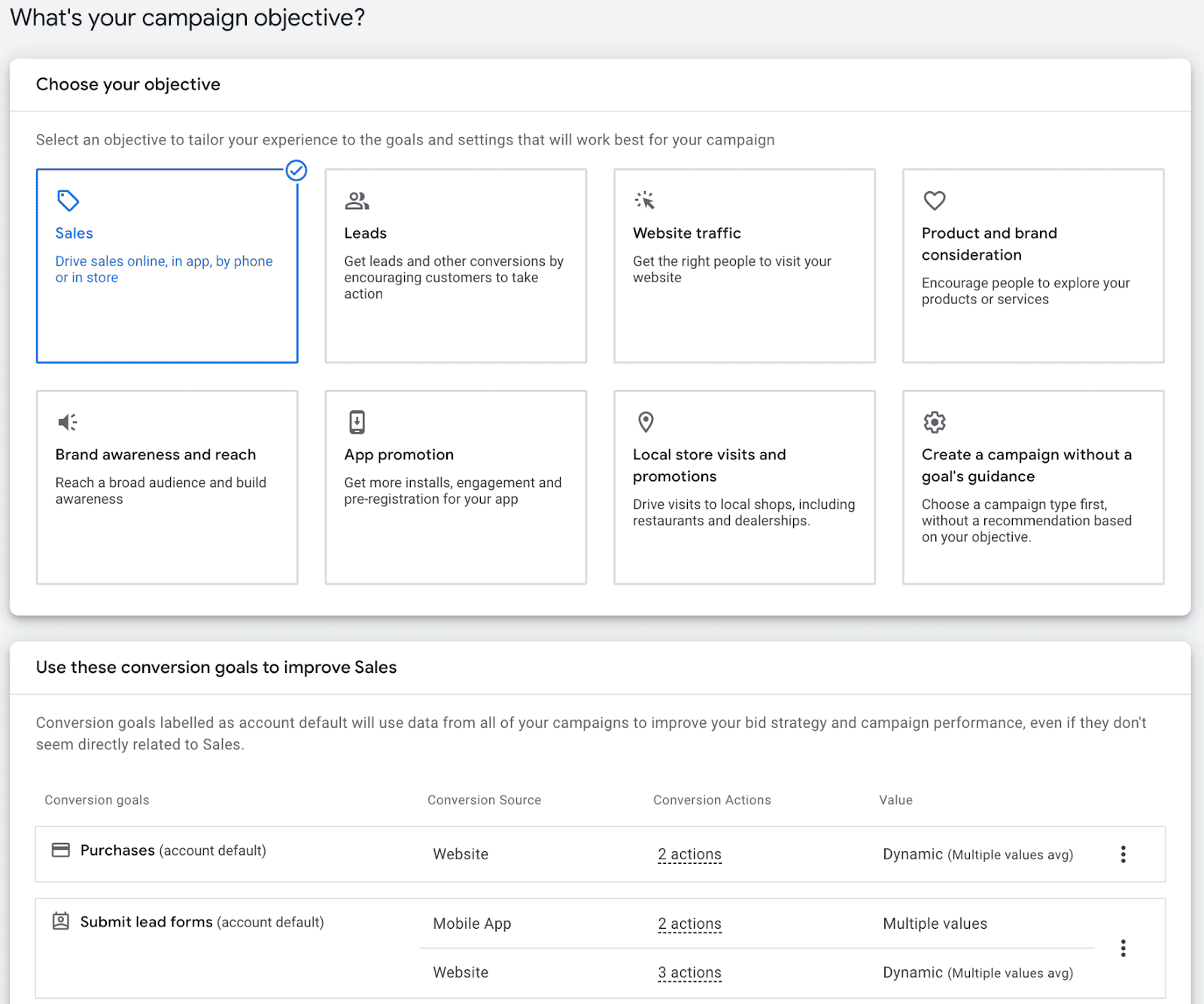Important tool updates - Learn more
- Learn
-
Articles
Read about influencer marketing
-
Growthnotes - Newsletter
Insights for the modern marketer
Over a million advertisers use Performance Max, according to internal Google data. That just goes to show how popular this smart, automated advertising solution has become within the marketing world.
And the conversion rate isn’t bad either, with an average rate of 1.83% (pretty close to the average conversion rate of 1.96 for all types of Google Ads).
If you’re considering Performance Max campaigns but aren’t sure how it really works in action, these real-world ad examples will help. You’ll see how different brands use automation, assets, and audience signals to drive results and pick up tips to improve your own campaigns.
P.S. Want to maximize your ad spend from the start? Consider partnering with top paid media agencies that specializes in Performance Max.
Performance Max (PMax) is Google Ads’ all-in-one, goal-based campaign type that leverages AI for bidding, budget allocation, creative assembly, and cross-channel placement (Search, Shopping, Display, YouTube, Gmail, Discovery, Maps).
Key upsides: hands-off management, true omnichannel reach, higher average conversion rates (1.83 %) and ROAS, plus clearer asset-level reporting and negative-keyword controls.
Seven ad formats in one campaign: Search, Shopping, Display, YouTube, Discovery, Gmail, and Maps, each auto-built from your shared asset pool.
Critical assets: up to 15 short headlines, 5 long headlines, 4 long descriptions, 20 images (landscape, square, portrait), square logo (1:1), optional landscape logo (4:1), and at least one HD video in vertical, square, and landscape for full channel coverage.
Setup best practices:
When to deploy: ideal for goals such as online sales, leads, or local traffic, and for advertisers who want one campaign instead of separate Search, Display, and YouTube builds.
Positioning alongside existing campaigns: keep branded or niche Search campaigns live; let PMax fill incremental demand. Common budget splits: 80 % PMax / 20 % other, or vice-versa for cautious testing.
Real-world wins: Joybird (+95 % revenue), LOT Polish Airlines (+68 % conversion rate), PBR Nashville ($26.5 k in two weeks), Deezer (+28 % subs, –15 % CPA).
Strategy tips: segment by product category, use Audience Signals to speed learning, monitor asset-group reports to prune weak creatives, and lean on video for ~20 % more conversions.
Bottom line: PMax streamlines Google Ads into one powerful machine-learning campaign; strong assets, sufficient budget, and clear goals unlock its full potential, often amplified by partnering with a specialist paid-media agency.
Performance Max (PMax) ads are a goal-based campaign type in Google Ads that combines automated bidding and machine learning across various Google advertising channels, including search, shopping, YouTube, display, Gmail, Maps, and Google Discover.
It works by setting up a single campaign with creative assets, such as headlines, descriptions, images, videos, and a product feed. Google’s AI then creates an ad using these assets in real time, according to your conversion goals and bid budget allocation.
This all‑in‑one campaign strategy simplifies management by allowing a single campaign to target potential customers across multiple formats. Also, unlike other Google Ads types, there’s no granular control required on your part.
PMax ads can be a powerful tool for businesses seeking to reach a broad audience without the hassle of managing separate campaigns and bidding strategies.
Performance Max (PMax) campaigns offer multiple advantages for e-commerce businesses and marketers seeking a streamlined marketing strategy. Take Joybird, for instance, a furniture retailer that saw a 95% increase in revenue and a 40% jump in ROAS after moving from Smart Shopping.
Here’s why marketers should consider incorporating PMax Ads in their paid media strategy:
Within Performance Max campaigns, there are essentially seven different types of ads. Let’s look at them closely with examples:
PMax Search Ads function similarly to traditional Google Search campaigns, appearing at the top of search engine results pages (SERPs) when users search for relevant terms on Google.
However, instead of relying solely on manually selected keywords, PMax uses machine learning to identify additional, high-potential search queries, including related terms, synonyms, long-tail keywords, and queries influenced by user intent signals, such as browsing history and location.
PMax can also dynamically adjust headlines and descriptions to match the user's intent.
PMax Shopping Ads are designed for e-commerce retailers to showcase their products directly within Google Search results, Google Shopping, and other networks. These ads replaced what used to be Smart Shopping Ads prior to 2022.
These ads are automatically generated from a product feed provided by the advertiser (via Google Merchant Center) and feature product images, prices, and store information.
PMax for shopping automates product feed ads and tries to show products across multiple channels to boost sales and ROI.
PMax Display Ads are visually rich advertisements that appear across the Google Display Network, which includes millions of websites, apps, and Google-owned properties. These ads use the images and videos the advertiser provides to create eye-catching banners and other visual formats.
PMax optimizes these display ads by using AI to determine the optimal combination of creative assets and placements for each user.

PMax YouTube Ads are video advertisements that appear on YouTube, including in-stream video ads (pre-roll, mid-roll, or post-roll), in-feed video ads (appearing in YouTube results or homepage feeds), and YouTube Shorts.
Advertisers provide video assets, and PMax AI uses these to reach users who are most likely to convert based on their viewing habits and interests.

PMax Discovery Ads are highly visual and interactive ads that appear in Google's Discover feed (on the Google app and mobile homepage), YouTube Home and Watch Next feeds, and the Gmail Promotions and Social tabs.
These ads are designed to capture attention and generate interest during users' "discovery moments" when the users are browsing for new content or products. They blend seamlessly with the surrounding content, often relying on subtle visuals.

PMax Gmail Ads appear within users' Gmail inboxes, specifically in the Promotions or Social tabs. These ads resemble emails and expand to reveal more details about the brand's offerings when clicked. They are a way to reach users in a more personal and less intrusive environment.

PMax Map Ads are sponsored listings that appear directly on Google Maps, improving visibility and accelerating conversions for local businesses.
These ads can appear as promoted pins when users browse an area, along routes when users search for directions, or at the top of search results when users look for specific locations or business types on Google Maps. They are handy for driving local store visits and calls.
Performance Max assets are the various creative components, including headlines, descriptions, images, videos, and logos, that advertisers upload into their PMax campaigns.
These assets are crucial because they are the building blocks that Google's AI uses to automatically generate and adapt ads across all of Google's channels.
High-quality, diverse assets enable PMax to create more compelling ad variations, optimize performance by tailoring messages to different audiences and platforms, and ultimately drive better results.
Let’s look at each type of asset and how it contributes to the success of PMax ads:
Your text assets form the backbone of PMax message testing. This is the text that’s used in search, display, shopping, and discovery ads.
Asset group reporting in Google Ads displays impressions, clicks, cost, conversion value, and average CPC per headline or description. So, it’s possible to experiment with different variations.
Here are some things to know about titles and descriptions:
High‑quality image assets–landscape, square, portrait–are essential for most types of PMax ads. Google requires at least one of each in your asset group. In total, you can add up to 20 images per asset group across all formats.
Recommended image sizes (per Google Ads):
All image files must be in JPG or PNG format and under 5 MB in size. Google also recommends keeping your key subject within the central 80% of the image to avoid cropping.
Use clean, high-resolution visuals with transparent or white backgrounds, especially for product-based ads. Avoid text-heavy graphics to maintain quality across placements.
For e-commerce, Google Merchant Center helps validate product feed images to ensure they meet ad eligibility criteria.
Lastly, don’t forget to upload a square logo (1:1 ratio), this is required. You can also add a landscape logo (4:1 ratio) for broader placement compatibility, though it’s optional.
Video assets are optional but highly recommended for Performance Max campaigns, especially if you want to extend your reach across YouTube, Discover, and Shorts. They enhance Google's AI matching and improve campaign visibility on video-based platforms.
To maximize coverage, Google recommends uploading at least one video in each of these formats:
Video requirements include:
Use Google Ads’ video creation tool if you don’t have custom video assets. It can generate short-form content from your images and text, though uploading your own videos gives better brand control.
For best performance:
Google reports that brands using video in their asset mix typically see a 20% increase in conversions compared to image-only campaigns.
Each asset group needs at least one final URL. Final URL Expansion can add related pages of your site. Brands that activated this saw a 9% lift in conversions at similar CPA/ROAS.
But if you want tighter control over conversion paths, disable URL expansion in campaign settings. Monitor actual search terms via the new Performance Max search terms report to refine redirects and landing pages based on user behavior.
Your calls to action guide users on what to do next. Include multiple CTAs like “shop now,” “learn more,” and “get a quote.” Asset report insights allow you to capture which CTAs perform best and reinforce them, and drop weaker options.
You can pick the CTAs from a list and include them in the asset group. Otherwise, Google automatically picks a relevant one.
Pro tip: Add as many assets as possible to the asset group for your PMax campaign. That can help the AI behind the scenes to create different, optimized varieties of ads.
P.S. Want to be sure your creative investment pays off? Explore our free paid media calculators to verify key metrics like ROAS and CPA, and back every decision with data that drives growth.
PMax campaigns have come a long way since their introduction in 2022. Since then, Google has supercharged it with more features and capabilities and made it into a powerful paid media advertising solution for both new and established businesses.
Let’s take a look at some successful PMax campaigns:
PBR Nashville, a cowboy bar, ran a PMax campaign for just two weeks for its Nashville Teams campaign and saw amazing results. This campaign, which showed ads on multiple channels, generated $26.5K in revenue.
Deezer, a music streaming service, experimented with PMax to increase its subscriber base. Although PMax was new at the time, the company experimented with various features. The result was a roaring success, as it increased subscriptions by 28% while bringing down the cost per subscription by 15%.
Strong assets are only part of the equation. Timing and use case matter too, so when should you actually run a Performance Max campaign?
It’s best to use Google Performance Max ads when your target matches the specific goals this type of campaign is designed to achieve–driving online sales, generating leads, or increasing traffic.
In fact, the PMax campaign type only shows when you select Sales, Leads, Website traffic, or Local store visits and promotions as your campaign objectives.

According to Google, the PMax campaign can be a good choice when you want to access all of Google’s advertising channels with a single campaign. It’s basically a lot more convenient than running multiple campaigns for search, display, YouTube, and other Google Ads types.
That said, deciding when to deploy Performance Max campaigns depends on your marketing objectives, budget, and existing campaign structure. PMax performs well when you have clear conversion goals, such as driving sales or generating leads, and ample budget.
Performance Max works best when your account already generates sufficient data. It’s recommended that you have at least 50-100 conversions in the last 30 days, so Google’s algorithm has enough data to learn and match target audience signals effectively.
Here’s how a marketer on a PPC Reddit thread put it:
PMax is a Machine Learning based ad format. If you don't have enough budget and conversion data, it will not work very well. Larger budgets with good conversion volume work great.
You can also use PMax as a complement to, not a replacement for, established campaigns. You may continue running separate Search campaigns for high-volume search terms, especially branded or niche keywords. However, an Optmyzr study found that PMax takes a backseat when other Search and Shopping campaigns are also running.
Pro tip: Set your daily budget at least 3× your target CPA to give Google's machine learning enough room to optimize across channels. Also, don’t set too high a target ROAS initially.
Creating the right strategy for your Performance Max campaigns helps align advertising efforts with business goals and ensures campaign efficiency. Strong PMax strategies also leverage tools like Audience Signals, which provide context for the algorithm.
Your PMax strategy and allocated budget will ultimately depend on your niche of business and expertise in PPC. For example, for ecommerce, one proven approach is segmentation by product categories. You can use a PMax campaign for your best-selling products while creating manual search, display, and shopping campaigns for other products.
According to Google, PMax campaigns offer 27% more conversions while having the same CPA or ROAS as standard campaigns. So, there’s quite a lot of potential in combining standard campaigns with PMax.
Should you take this route, there are two strategies, as recommended by DataFeed Watch:
Most marketers struggle with running different types of Google Ads campaigns. However, Performance Max brings all those campaigns in one, unified place with easy management and automated bidding.
Still, you’d be surprised by just how much thinking (read strategy) goes into running a successful PMax campaign. There are many successful examples to inspire you, but ultimately, you’ll need to focus on your brand and come up with your own strategy.
This is where hiring a professional agency can be handy. With PPC experts, especially those with experience in Google Ads, you can ensure that those PMax ads absolutely achieve the set target ROAS or max conversion value.
Explore the top Google Ads agencies to help you power your Performance Max campaigns!
Performance Max assets include all content types you upload (headlines, descriptions, images, videos, final URLs, and CTAs). Google AI combines them across search, YouTube, display ads, Gmail, and Maps within each asset group. They’re the building blocks for your ads to reach your target audience.
Asset groups are themed sets of creative assets and product feed items (if using Merchant Center). Each group must include at least one final URL and combine assets to align with your campaign goals.
You can’t share a group across campaigns, but you can include multiple groups for different product categories or audience segments.
In Google Ads, select a campaign objective, then select Performance Max as the campaign type. Upload multiple headlines (short and long), descriptions, images (landscape, square, logo), and optional videos.
Add your product feed via Merchant Center if running shopping ads. Set your conversion goals, daily budget, Audience Signals, and Smart Bidding strategy, ike target ROAS or maximize conversion value. And you’re all set to kick-start your first PMax campaign!
Performance Max replaced Smart Shopping and Local campaigns in 2022. Both PMax and Smart campaigns use machine learning and automated bidding, but Smart campaigns were limited to basic search and display placements
Performance Max is a goal-based campaign type that spans advertising channels, including Gmail, Maps, video ads, and Discovery. It also supports a full set of creative assets, richer asset reporting, audience signals, and reporting.
PMax aims to optimize campaign performance through AI-powered optimization across Google’s advertising network. It helps advertisers reach a wider audience, increase conversion value, and simplify campaign management by using asset groups and Smart Bidding within a single powerful tool.
To set up a PMax campaign, you’ll need: a product feed in Merchant Center (for shopping ads), at least three short headlines and one long headline, three descriptions, high-quality images (one for each format), optional videos, one final URL, and CTAs. You can also add Audience Signals and conversion tracking set up in Google Analytics or Google Ads.
Performance Max campaigns offer several benefits. First off, they let you reach people across all of Google–Search, Display, YouTube, Gmail, Discovery, even Maps–with just one campaign. They also use Google’s AI to handle the heavy lifting, like automatically adjusting bids, placements, and ad combos in real time to help boost your conversions and get more value from your budget.
Performance Max campaigns run across all of Google’s advertising channels: Google Search, Display Network, YouTube, Gmail, Discover, Google Maps, and partner sites. They automatically optimize asset placement based on user behavior, search intent, and campaign targeting.